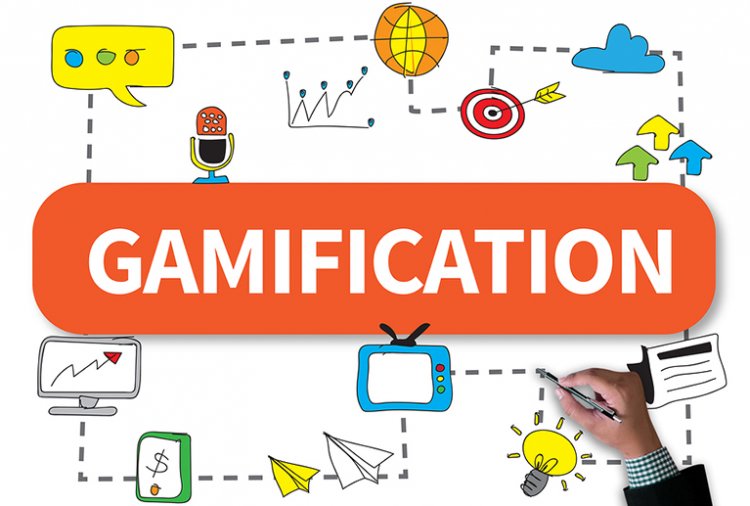Pros and Cons of Gamification
Gamification is the use of game mechanics in a learning-oriented environment. Gamification is a great tool, but to use it effectively in a corporate setting, some points need to be considered.

How to Use Gamification Effectively
When you think of gamification, don't just think of video games. Because gamification is used in different ways in all areas of life. Teachers use gamification to teach students information. Companies use gamification to drive sales, motivate employees, and increase their concentration. Gamification is a great tool, but to use it effectively in a corporate setting, some points need to be considered.
What is Gamification?
Gamification is the use of game mechanics in education to encourage students to explore and learn as they move towards the ultimate goal in education. Let's be clear: Gamification is not about winning, losing or how your students/staff play the game. Rather, it is about encouraging desired behaviors towards learning outcomes.
Pros of Gamification
Let's look at the pros of gamification in the field of e-Learning.
1. Increases Engagement
Who doesn't love to play games? As adults, we still have the basic play instinct. Scrolling through slides, clicking the next one occasionally, and listening to long lectures isn't very interesting. Employees who love their jobs are often more productive at work. Gamification is a great tool for turning boring eLearning courses into engaging and interesting experiences. Games encourage friendly competition among coworkers. At the end of a series of gamified challenges and missions, it makes employees feel proud of completing a course. When employees feel emotionally connected to the content, the memorability of the information given in the training increases. Gamification increases the willingness of employees to achieve the learning objectives of the course. Because they want to know what's next when they complete a chapter thanks to gamification.
2. Provides Instant Feedback
It is a big plus that employees get instant feedback as they progress through the game, whether positive or negative. In this way, they continue to progress in the learning process. Integrating feedback into learning objectives allows employees to track their progress throughout the game/learning. In addition, it motivates them and increases their desire to successfully complete the game/training. Leaderboards are another way to offer additional feedback. In this way, employees can compare themselves with their colleagues.
3. Boosts Motivation with Features Like Badges
Motivation is the main driving force that makes employees want to get to the end of the game/training and complete learning. Badges are rewards given at checkpoints throughout the game. You can develop reward mechanisms in many different ways, from giving a Starbucks gift card to the first 100 employees who do not successfully complete the Game/Training, to a simple sticker. Giving badges is a great technique as badges are viewable in-game/tutorial or on the company's website and make the user feel important and capable. Badges give students a sense of achievement.
Cons of Gamification
Now let's look at the cons.
1. Expensive to Develop
Games take longer to develop than traditional e-Learning courses. Time is also money. Not to mention the cost of additional resources used to develop games. Animations, graphics, stock photos and videos, music and sound effects all mean additional costs.
2. Its Value May Decrease Over Time
Games are not only costly to develop but also to maintain. Even cool games that came out a few years ago usually don't take long to look old. An outdated game can cause employees to question whether the content is also outdated. Another disadvantage is the reference value of a game. Games are pretty much one-time, meaning an employee won't want to play the game again after completing the game when they need to refer to the context to repeat some information. Depending on the content, additional reference material to the game may also need to be created. This, of course, will increase the cost of the project.
3. Quizzes That Look Like Games
Games should be fun. Who likes taking exams and quizzes? Creating interactive, fun games without quizzes that look like games takes time and creativity. Evaluations in games, like any other e-Learning course, need to provide feedback on learning objectives and let the employee know where they are lacking. Collecting points or stars may not be enough to motivate adult employees. Tokens, badges, or in-game rewards need to be meaningful to employees. For example, the badges that will be given to your employees in return for the “Training on Coping with Challenges in the Workplace” included in the gamified training may be more meaningful for them. Training for real-life scenarios, situations, and work-related challenges is more effective than traditional exams and tests.
Conclusion
Gamification in corporate education is a great tool when used in situ. Still, it's good to be careful. Before gamifying all training, remember that your employees are adults. A piecemeal gamification approach will be more effective for your employees. Tutorial designers need to consider these pros and cons that we've listed before starting game development. Ensuring that the training is appropriate for the learning outcomes will bring along a successful gamified training.